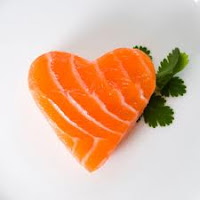An Italian chef ex-boyfriend once said to me "of all the fruits out there, the strawberry is the one that's changed the most drastically over the years." And on this one point, I agree with him (don't get me started on everything over which we disagree!) When I first lived in Rome, even before I attended culinary school, I noticed how different the smaller, flavor-packed local berries tasted compared to the gargantuan California monstrosities one finds year-round in the States. The berries in Rome aren't grown to impress the eye, but rather to excite the palate. And so...let's just say I ate my fair share of strawberries in Rome.
And then I discovered fragoline di bosco. And I was ruined for other berries forever. Now, I've always been a berry fan. I remember all the family vacations to Maine in my youth, tasting the sweet wild blueberries used in everything from ice cream to breakfast everything (once you have wild blueberry syrup on your pancakes, you'll be saying "maple wha-who?"). Ditto cranberries on Cape Cod: cranberry juice was always the only juice I drank, starting from about age 5, and cranberry fudge? A must, people, a must. And sure, I've always been a fan of raspberries and blackberries as well, so picking wild gelsi (a southern Italian large, plump blackberry) on the Italian islands from Ponza to Panarea -- and enjoying them in sorbet form, post-swim, made me giddy. Even more recent forays into esoteric, more exotic berries -- gooseberries, various currants, acai, and kiwi berries -- yes, all good. And all good for you. But fragoline di bosco still top my list.
The people of Nemi are as crazy about their local harvest as I am, and feature strawberries in just about every form you can imagine at their annual sagra di fragole, or strawberry festival. The town is perched above beautiful lago di Nemi, a picturesque volcanic lake that makes this hillside town a fabulous day trip destination from Rome. Throughout the town, vendors sell strawberries of various sizes, including the fragoline di bosco (literally "tiny strawberries from the forest").
 In the center of town, not only are the crimson berries tossed into one huge glass bowl for the crowd to enjoy, they're made into delicious comestibles. From savory salads with arugula, parmigiano, and aged balsamic vinaigrette...to being tucked into tiramisu' and tiny fruit tarts topped with the baby berries...from icy-cool sorbetti to sweet-tart liqueurs featuring the fabulous fruit -- if you can imagine it, you can probably find it in Nemi.
In the center of town, not only are the crimson berries tossed into one huge glass bowl for the crowd to enjoy, they're made into delicious comestibles. From savory salads with arugula, parmigiano, and aged balsamic vinaigrette...to being tucked into tiramisu' and tiny fruit tarts topped with the baby berries...from icy-cool sorbetti to sweet-tart liqueurs featuring the fabulous fruit -- if you can imagine it, you can probably find it in Nemi.But the way I really fell in love with fragoline di bosco? Well, plain and simple, purchased as is from the market. I would taste them at Claudio's stand at the mercato Campo de' Fiori in Rome, rinsing them off under the stream of water flowing from a nearby fountain, and popping them into my mouth to make sure they were in fact at their peak of flavor. And besides eating them out of hand, the best way to enjoy these little gems -- or any great Italian strawberries, really, is of course the local way: tossed in a mixture of aged balsamico di Modena (good quality aged balsamic vinegar) mixed with a little sugar, to form a syrup. Just mix that in a bowl to dissolve the sugar, toss the strawberries in, and gently...gently toss to coat. It sounds strange to the uninitiated. It has confused many a diner, and plenty of my clients as well. But trust me: it is a marriage made in heaven.

















